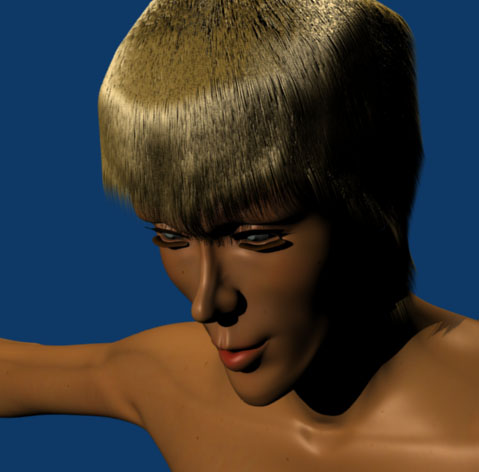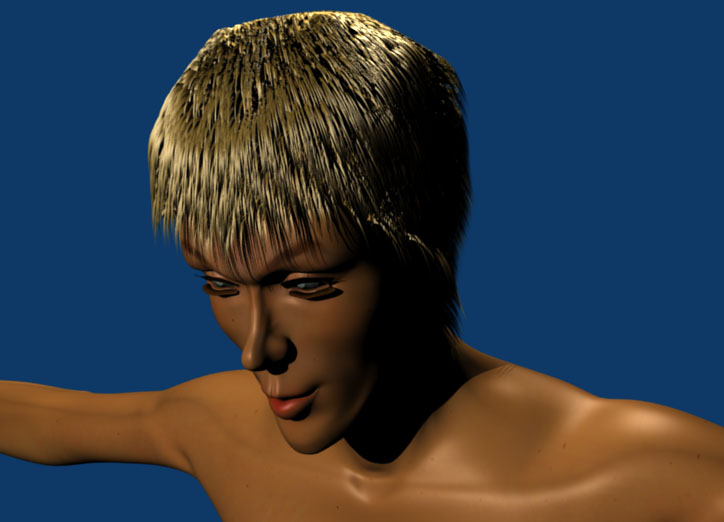Hey. I’m following this tutorialon how to add hair to Blender, and overall it’s going pretty well. I noticed some white specks here and there that looked really out-of-place, though, so I reduced the number of hairs to get a better look at the problem.
Sure enough, each and every hair has a tiny white pixel at its base, and sometimes these show through. I can’t figure out what’s causing it. Any ideas on how to fix it?
Note that my gradient texture fades to transparency on both ends. This is my sole deviation from the tutorial (other than hair color.) I did this because I wanted the roots to fade to a soft, triangular point if they’re ever exposed, just like the ends do.
(I don’t see how that could be causing the white point, though. It’s in the alpha texture, so if anything there would be red pixels down there, not white, if my gradient were the problem.)
Thanks in advance for any helpful replies!
Edit: And yes, I am using the intenral Blender renderer. My goal is to get the “fastest good results,” so I would like to continue to use the internal renderer if at all possible.
Update: Looks like it was my specularity settings that were causing the problem. I changed the hair to black, discovered that specularity was making it look grey, and after various attempts to fix this using specularity gradients, I gave up and just set the specularity color to 0,0,0. Surprisingly, this solved the dandruff roots problem, but unfortunately it also makes my character’s hair monochromatic.
So, now my question becomes: Is there any way to keep that lovely “real hair” sheen, without killing off specularity?
(I have no clue why specularity is much brighter for the first particle in each hair strand than the subsequent particles. Maybe they start off moving slowly or something, so they’re more densely concentrated at the base of the strand, or something… any insight on this would be helpful.)
Attachments
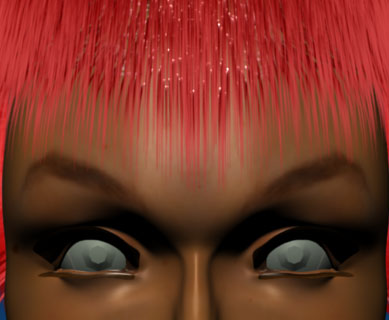
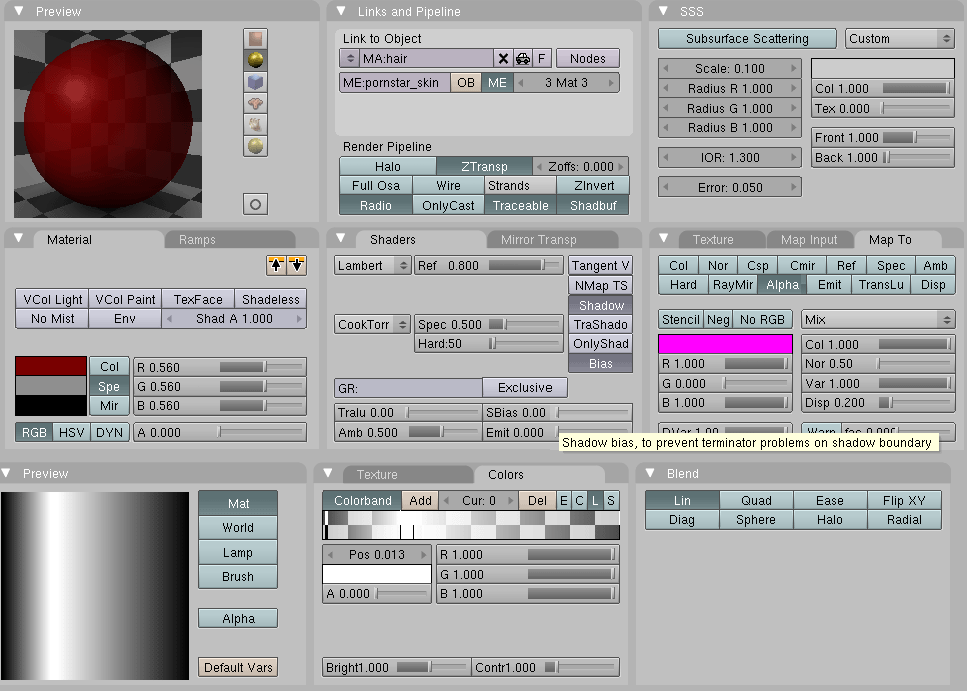

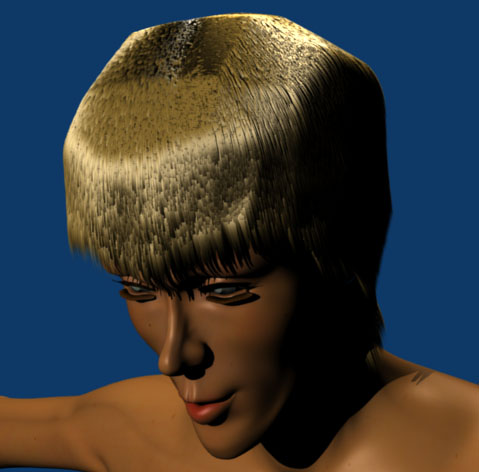
 The bad news is it still takes 7 minutes to render one frame of this, and it looks like I’ll need even more strands to completely eliminate that shadow problem. (The scalp still shows through in a few spots, and so you see black lines; those are patches of skin covered with the shadows cast by all the other hairs!)
The bad news is it still takes 7 minutes to render one frame of this, and it looks like I’ll need even more strands to completely eliminate that shadow problem. (The scalp still shows through in a few spots, and so you see black lines; those are patches of skin covered with the shadows cast by all the other hairs!)
